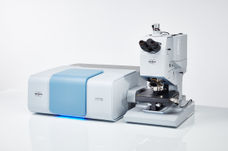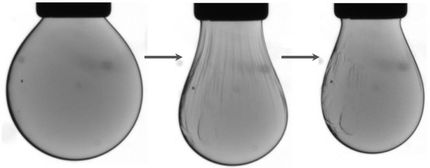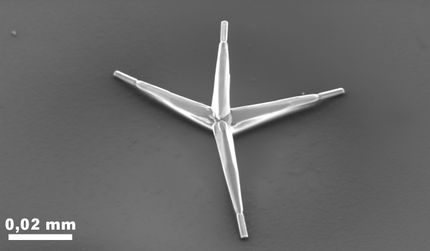Nanocellulose materials by design
Theoretically, nanocellulose could be the next hot supermaterial
A class of biological materials found within numerous natural systems, most notably trees, cellulose nanocrystals have captured researchers' attention for their extreme strength, toughness, light weight, and elasticity. The materials are so strong and tough, in fact, that many people think they could replace Kevlar in ballistic vests and combat helmets for military. Unlike their source material (wood), cellulose nanocrystals are transparent, making them exciting candidates for protective eyewear, windows, or displays.

This is an illustration of a single cellulose nanocrystal and a cross-section.
Robert Sinko
Although there is a lot of excitement around the idea of nanocellulose-based materials, the reality often falls flat.
"It's difficult to make these theoretical properties materialize in experiments," said Northwestern Engineering's Sinan Keten. "Researchers will make composite materials with nanocellulose and find that they fall short of theory."
Keten, an assistant professor of mechanical, civil, and environmental engineering at Northwestern University's McCormick School of Engineering, and his team are bringing the world one step closer to a materials-by-design approach toward developing nanocomposites with cellulose. They have developed a novel, multi-scale computational framework that explains why these experiments do not produce the ideal material and proposes solutions for fixing these shortcomings, specifically by modifying the surface chemistry of cellulose nanocrystals to achieve greater hydrogen bonding with polymers.
The research is supported by the Army Research Office and National Institute of Standards and Technology. Xin Qin and Wenjie Xia and Robert Sinko are graduate students in Keten's lab.
Found within the cellular walls of wood, cellulose nanocrystals are an ideal candidate for polymer nanocomposites -- materials where a synthetic polymer matrix is embedded with nanoscale filler particles. Nanocomposites are commonly made synthetic fillers, such as silica, clay, or carbon black, and are used in a myriad of applications ranging from tires to biomaterials.
"Cellulose nanocrystals are an attractive alternative because they are naturally bioavailable, renewable, nontoxic, and relatively inexpensive," Keten said. "And they can be easily extracted from wood pulp byproducts from the paper industry."
Problems arise, however, when researchers try to combine the nanocellulose filler particles with the polymer matrix. The field has lacked an understanding of how the amount of filler affects the composite's overall properties as well as the nature of the nanoscale interactions between the matrix and the filler.
Keten's solution improves this understanding by focusing on the length scales of the materials rather than the nature of the materials themselves. By understanding what factors influence properties on the atomic scale, his computational approach can predict the nanocomposite's properties as it scales up in size -- with a minimal need for experimentation.
"Rather than just producing a material and then testing it to see what its properties are, we instead strategically tune design parameters in order to develop materials with a targeted property in mind," Sinko said. "When you are equalizing music, you can turn knobs to adjust the bass, treble, etc. to produce a desired sound. In materials-by-design, we similarly can 'turn the knobs' of specific parameters to adjust the resulting properties."
Original publication
Other news from the department science
These products might interest you

Eclipse by Wyatt Technology
FFF-MALS system for separation and characterization of macromolecules and nanoparticles
The latest and most innovative FFF system designed for highest usability, robustness and data quality

HYPERION II by Bruker
FT-IR and IR laser imaging (QCL) microscope for research and development
Analyze macroscopic samples with microscopic resolution (5 µm) in seconds

Get the chemical industry in your inbox
By submitting this form you agree that LUMITOS AG will send you the newsletter(s) selected above by email. Your data will not be passed on to third parties. Your data will be stored and processed in accordance with our data protection regulations. LUMITOS may contact you by email for the purpose of advertising or market and opinion surveys. You can revoke your consent at any time without giving reasons to LUMITOS AG, Ernst-Augustin-Str. 2, 12489 Berlin, Germany or by e-mail at revoke@lumitos.com with effect for the future. In addition, each email contains a link to unsubscribe from the corresponding newsletter.




























































